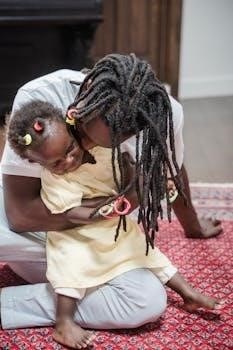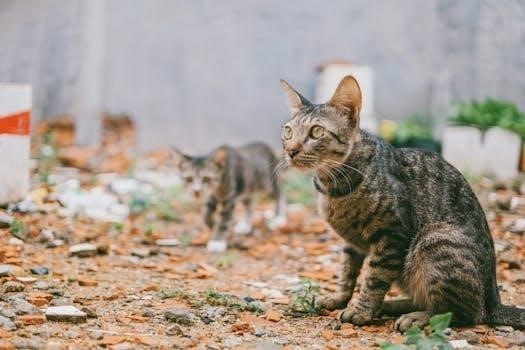What is a T-Shirt Quilt?
A T-shirt quilt transforms treasured shirts into a unique memory keepsake. It’s a personal project, reflecting your style, each telling a story.
Definition and Purpose of T-Shirt Quilts
A T-shirt quilt is a unique and personalized quilt made from a collection of T-shirts. Instead of discarding old shirts filled with memories, they are repurposed into a warm and functional keepsake. These quilts are more than just blankets; they are tangible representations of experiences, achievements, and passions. Think of them as memory quilts, each square holding a special significance, like a favorite concert, a sports team victory, or a milestone event. The purpose of a T-shirt quilt extends beyond providing warmth; it serves as a comforting reminder of cherished moments and a way to preserve beloved memories. They make thoughtful gifts for graduations, birthdays, or any occasion where you want to give something truly special and meaningful. Furthermore, creating a T-shirt quilt is a sustainable way to repurpose clothing, reducing textile waste and giving new life to items that might otherwise end up in landfills. They are truly one-of-a-kind creations, reflecting the individual’s unique story and experiences.

Materials Needed
Creating a T-shirt quilt requires essential tools⁚ T-shirts, interfacing, cutting tools, sewing machine, batting, backing fabric and binding.
Essential Supplies for T-Shirt Quilting
To embark on your T-shirt quilt adventure, gather these essential supplies. You’ll need a collection of T-shirts that hold special memories, ready to be repurposed into a cozy quilt. Interfacing is crucial for stabilizing the T-shirt fabric, preventing stretching and distortion during sewing. Sharp cutting tools, such as a rotary cutter, quilting ruler, and cutting mat, will ensure precise and clean cuts for your T-shirt squares. A reliable sewing machine is essential for piecing together the quilt top, adding batting, and securing the backing. Speaking of batting, choose a batting material that suits your desired quilt thickness and warmth. The backing fabric will form the back of your quilt, providing a soft and comfortable layer. Lastly, binding is used to finish the edges of the quilt, creating a neat and professional look. With these supplies in hand, you’ll be well-equipped to create a cherished T-shirt quilt that will be treasured for years to come.

Preparing the T-Shirts
Begin by washing shirts without fabric softener. Cut off the back, leaving the front design. Fuse interfacing to stabilize, then cut into uniform squares.
Cutting and Stabilizing T-Shirt Squares
Start by washing and drying your T-shirts, avoiding fabric softener as it hinders stabilization. Lay each shirt flat, smoothing out any creases. Carefully separate the front from the back by cutting along the side seams and underarm seams. Discard the back panel, focusing on the design on the front. Next, cut Pellon Shir-Tailor interfacing into squares, typically 12 1/2 inches, one for each shirt. Position the interfacing with the resin side (rough side) down on the wrong side of each T-shirt square. Iron following the manufacturer’s instructions to fuse the interfacing to the back of the T-shirt squares. This step is crucial to prevent stretching and distortion during sewing. Use a press cloth and a low-heat iron to avoid ruining the T-shirt design. If the graphic isn’t centered, adjust the cut. Finally, remove the stencil and cut out the T-shirt along the marked lines, repeating for all shirts to ensure uniform squares ready for quilt assembly.
Quilt Layout and Design
Think of your quilt as a puzzle! Creativity is key. Lay out T-shirt squares in your desired pattern before sewing. Consider color and design balance.
Arranging T-Shirt Squares for Visual Appeal
Before you start sewing, take some time to plan the layout of your T-shirt quilt. This is where your creativity shines! Think of it as arranging a mosaic of memories. Consider the colors, designs, and logos on each T-shirt square. Do you want a symmetrical look, or something more random and eclectic? Lay out the squares on a large surface, like a floor or a design wall, and experiment with different arrangements.
Pay attention to the balance of colors and patterns. Avoid placing similar colors or busy designs next to each other, as this can make the quilt look cluttered. Instead, try to distribute the colors and patterns evenly across the quilt top. You can also use sashing (strips of fabric between the squares) to create visual interest and separation.
Consider the size of the T-shirt squares and how they will fit together. If you have squares of different sizes, you may need to adjust the layout to ensure that they all fit together seamlessly. You can also use filler squares or rectangles of fabric to fill in any gaps.
Don’t be afraid to experiment and try different arrangements until you find one that you love. Take photos of your favorite layouts so you can remember them later. And most importantly, have fun! This is your chance to create a unique and personal quilt that will be treasured for years to come.
Sewing the Quilt Top
Time to stitch your vision! Sew squares into rows, then join rows. Accurate seams ensure a flat, professional finish.
Assembling the T-Shirt Squares into Rows and Columns
Now comes the exciting part where your carefully prepared T-shirt squares begin to transform into a cohesive quilt top! This stage requires precision and attention to detail to ensure a professional and visually appealing final product. Start by arranging your stabilized T-shirt squares according to your chosen layout. This is your last chance to make any adjustments to the design, so take your time and step back to assess the overall look. Once you’re satisfied, begin sewing the squares together, one row at a time. Use a consistent seam allowance, typically ¼ inch, for all seams to maintain uniformity. After sewing each row, press the seams open or to one side, depending on your preference. Pressing open reduces bulk, while pressing to one side can provide added stability. Be mindful of the fabric’s tendency to stretch; handle the squares gently to avoid distortion. Once all rows are complete, it’s time to join them together to form the quilt top. Align the rows carefully, paying close attention to matching seams where the squares intersect. Pin the rows together securely, and then sew them using the same consistent seam allowance. Again, press the seams open or to one side after sewing. With the quilt top fully assembled, give it a final press to ensure it lies flat and smooth. Trim any excess fabric along the edges to create a clean, even border. Your unique T-shirt quilt top is now ready for the next step⁚ adding batting and backing to create the quilt sandwich!

Adding Batting and Backing
Layer batting and backing to prep the quilt. Smooth for no wrinkles. This creates warmth and comfort, readying it for the final quilting touches.
Layering and Securing the Quilt Sandwich
Creating the quilt sandwich involves layering the backing fabric, batting, and quilt top. Start by laying the backing fabric right side down on a large, flat surface. Ensure it’s smooth and free of wrinkles. Next, spread the batting evenly over the backing fabric, ensuring it extends beyond the edges of the quilt top. Finally, carefully place the quilt top right side up on top of the batting. Take your time to align all layers properly. Once layered, use safety pins or basting spray to secure the quilt sandwich. Start pinning from the center and work your way outwards, placing pins every few inches to prevent shifting during quilting. Basting spray provides a temporary adhesive hold, ideal for smoother quilting. Securing the layers well is crucial for a professional finish and prevents bunching or distortion while quilting. This step ensures the layers act as one, creating a comfortable and durable quilt that will last for years. Proper layering and securing are the foundation for successful quilting.

Finishing the Quilt
The final touches involve binding the edges for a neat finish and quilting the layers together for added durability and design.
Binding the Edges and Quilting
Once the quilt sandwich is assembled, the next crucial step is finishing the quilt. This involves two main processes⁚ binding the edges and quilting the layers together. Binding protects the raw edges of the quilt, giving it a clean, professional look while adding durability. Choose a binding fabric that complements the T-shirt designs. You can use a solid color or a patterned fabric that ties in with the quilt’s overall theme. The binding is typically attached using a sewing machine, folding it over the edges and securing it with a stitch. Quilting is the process of stitching through all three layers—the T-shirt top, batting, and backing—to hold them together and create texture. This can be done by hand or with a sewing machine. There are many different quilting patterns you can use, from simple straight lines to more complex designs. Consider the overall style of your T-shirt quilt when choosing a quilting pattern. Once the quilting is complete, trim any excess batting or backing fabric and give your T-shirt quilt a final press. With the binding and quilting complete, your T-shirt quilt is now a finished, treasured keepsake.
